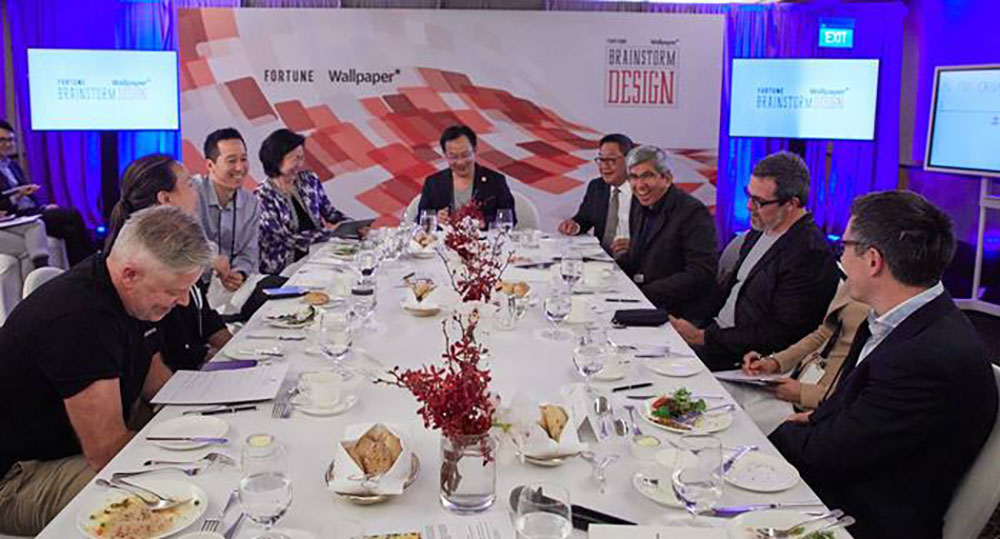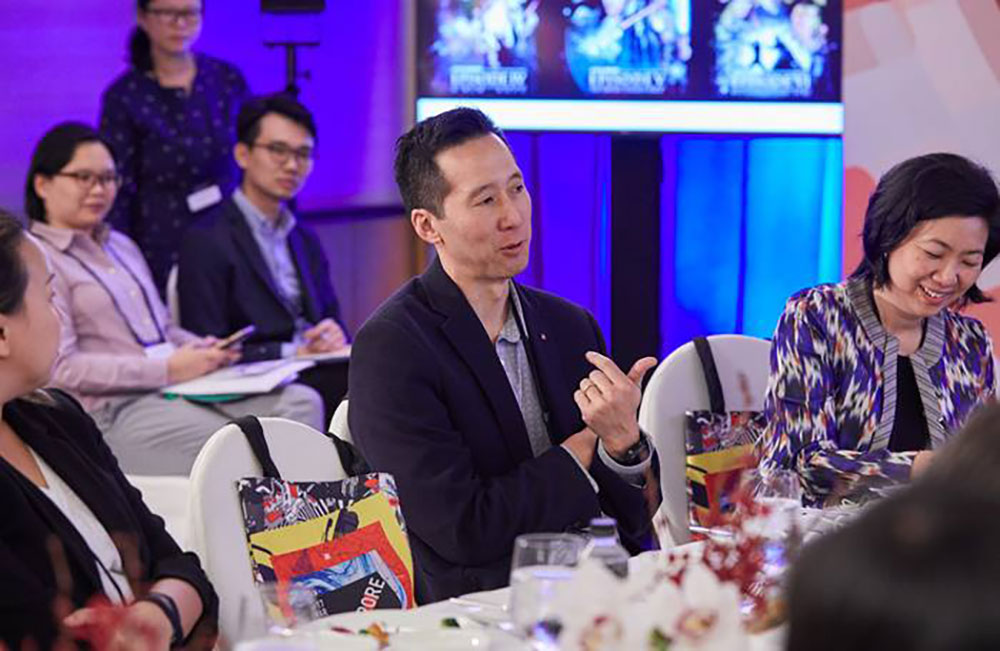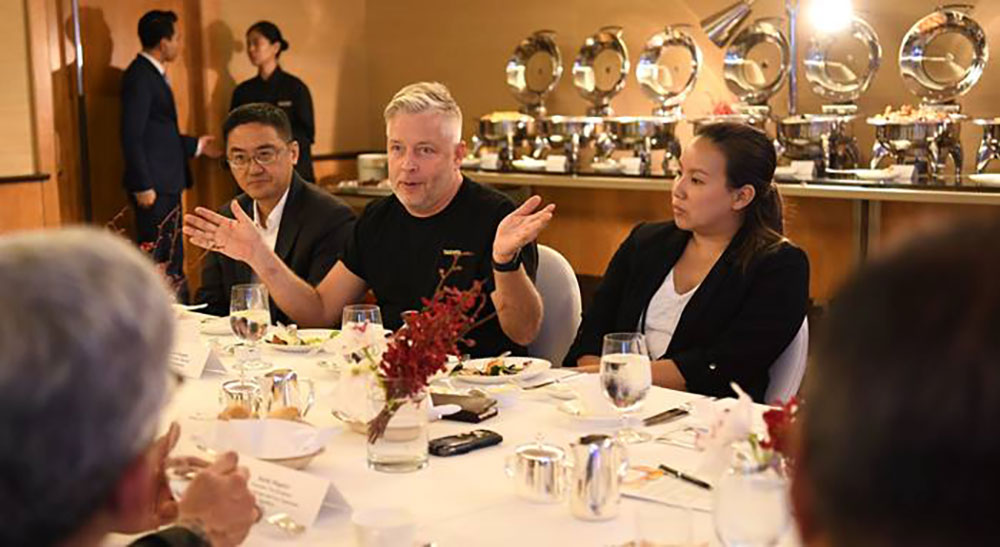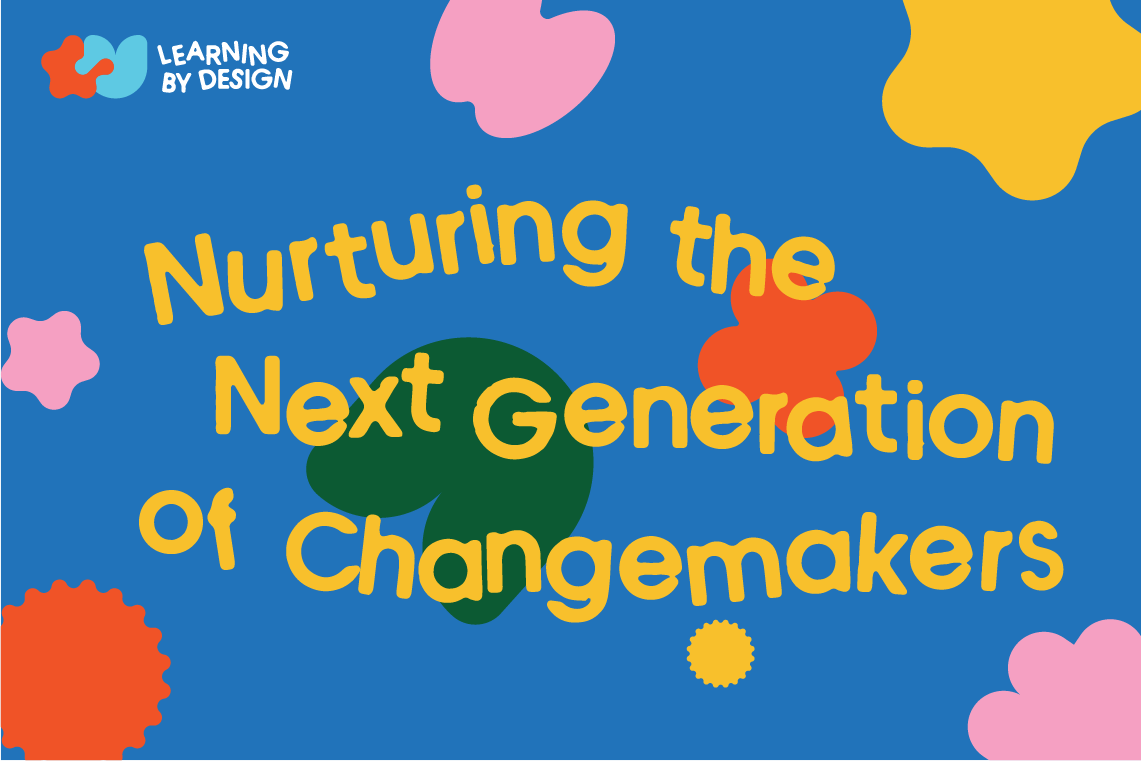“Define the right problem to solve, first” advise design experts
As part of Singapore Design Week 2019, the DesignSingapore Council and the Economic Development Board co-hosted a roundtable discussion on design with four global design leaders and local industry leaders.

When companies are design-led and user-centred, the result is often higher revenues for them and higher returns on investment for their shareholders compared to industry benchmarks. Driving this focus is design thinking, which in essence delivers what customers actually want that ultimately enhances their user experience.
In a three-day conference, Brainstorm Design, at the Ritz-Carlton, from 5-7 March 2019, some of the world’s leading practitioners of design and design thinking shared their expertise, and how this process is helping their businesses create value and transform internally.
On the final day, four of them sat down with a select group of seven local industry leaders for a lively discussion on where Singapore companies are at in adopting design and design thinking and the challenges they face. As co-hosts, Economic Development Board’s Design Ambassador Agnes Kwek and the DesignSingapore Council’s Executive Director Mark Wee moderated the discussion.
Packing a wealth of experience, the panel of experts included Ben Sheppard, Partner at McKinsey & Co and co-author of The Business Value of Design, a study that tracked the design practices of 300 publicly listed companies. Another was Marcus Engman, CEO and Creative Director of Skewed Productions. Formerly Ikea’s head of design, he overhauled the Swedish flat-pack giant’s way of doing design – opening up the design process to share how IKEA works and what the brand stands for. SAP’s former chief design officer, Sam Yen, who is now Head of Digital, Commercial Real Estate and Commercial banking at JPMorgan Chase, and Justin Maguire, Executive Vice President of Salesforce’s Product Design and User Experience, completed the panel.
They offered valuable insights to the Singapore business executives, who said the role design played in their respective companies varied in degrees. All shared that design was used in the designing of products and services, but only a couple said design was used to inform their organisational strategy.
Given that design thinking is in its infancy here, the Singapore executives were keen to draw on the expertise of the panel in order to apply it more fully in their organisations. In the discussions, two broad themes emerged: applying design thinking cost-effectively; and evangelising design and design values across entire organisations.
Using design thinking effectively
On the issue of cost and deciding which project requires design thinking investment, Yen, who had led 1,000 designers at SAP, says organisations need to understand that defining the right problem is the critical first step. “The most important part of design thinking is identifying who you are solving the problem for and what problem you are solving. You have to figure this out before going into problem solving.”

“So when people say I should only apply design thinking to this project [and not the other one], the question is, ‘Should I start spending money, time and effort, if I don’t have a good idea of whom I am building for and what the problem is?’ Problem finding is just as important as problem solving – that is the most important take away of this entire process.”
Maguire agrees. A “B” team, he adds, can still yield great results if they receive a good design brief with the right problem defined; conversely, a poorly defined design brief can result in disaster even when you put the “A” team on it.
Engman drew on his successful experience at IKEA to share the concept of “Democratic Design”, which has become a common language around design for the Swedish company. This design ethos – made up of five pillars (form, function, quality, sustainability and affordability) allows engineers, designers, marketers and even floor managers to talk about their products with the same understanding

This democratisation of design also includes communicating what it does more transparently with consumers, hence transforming IKEA from a “purchase” brand (where goods were made and sold) to a “usage” brand.
“We got them involved in the design phase all the way, turning Ikea into a usage brand and telling a story on how they could use Ikea products for better solutions in their homes. So, when you start something, be transparent about the process. Talk about what you are doing, educating users and customers to let them be aware of the value of the products.”
Chiming in, Yen adds, “In the past the product came first and marketing followed later. Now it’s becoming more meshed together to create a holistic experience. Experience is the brand.”
Embedding design across the organisation
Transformation, though, starts within the company, Maguire emphasises. Crucially, a company needs to get its middle management staff to buy into design thinking because in his observations they are often averse to new ideas. The middle block, so to speak, is the middle block. “They are the barriers to innovation, rarely their CEOs. The think tanks, the change moments, the initiatives and all that stuff are crowd-sourced from the lowest levels or started at the highest levels. But the middle of the organisation is totally at odds in every way. They are not on board and the incentives are not with them.”
Change in behaviours, he points out, follows incentives. “If the incentives are wrong, the behaviour would be wrong. The question that needs to be addressed, then, is ‘Are the incentives actually aligned to what a company’s values are and wished to get out of its people?’ Otherwise, you are literally at odds with yourself.”

He adds that if each of the executives were to pick five people for a new start-up, and if the sum of their super powers” won’t help the start-up be more user focused, “then you have picked the wrong people”. Taking this further, Sheppard points out that being able to measure design performance with the same rigor as revenues and costs is one of the ingredients for success outlined in the McKinsey report.
The metrics, he says, need not be industry specific, but they have to be company specific. He shares how a company, specialising in diabetes, had highly specific design-related metrics, e.g. system usability, for different teams whether they were in finance, project management or R&D. In this case, it took the company years to get to “a place where they have that level of granularity they are looking at”.
“For another company in the other extreme, I worked with a CEO, who was adamant that his top team had lost connection with customers they served,” adds Sheppard. “He made changes, mandated that they spend a day a month with customers.
“This is the metric he introduced: Instead of tying 100 percent of their bonuses to profit, he changed the formula to 50 percent of the profit. The other 50 percent would be tied to the favourability of their products.”
The CEO told his staff that on Christmas Day, he would go onto Amazon, where they sold 47 of their products, and see how many stars out of five these products received. The average of those scores would determine the 50 percent of their bonuses.
Sheppard admits, “This is not the perfect measure but it had the exact intended consequences.” In the boardroom, he reveals, the executives of that company were suddenly talking about how the products would resonate with users – user-centricity had been successfully brought back to the fore.
Sheppard adds, “This is a crude example to show that you don’t have to wait three years to create Singapore’s best set of metrics. Start early, start with something as crude as that and you will have an incredible impact early on.”

If there is one thing to get design thinking off the ground in Singapore companies, what would it be, moderators enquired of the panel of experts.
Yen recommends keeping the conversation going outside of their respective organisations because everybody is going through the same journey and learning the same lessons, especially the patterns of success and failure. Sheppard points to the research he co-authored, as it contains a wealth of information to get them started.
For Engman, it is about marrying the design with the communications processes and to talk about what they are doing and not what they have done. Maguire says continuing to invest in, and breed a desire and culture for listening is important. He adds it is equally important to identify channels through which they can listen to their customers and this needs to be embedded across the organisation.
In pointing Singapore companies the way forward in design thinking, both Wee and Kwek say the DesignSingapore Council is fully prepared to support them on this journey.
END
This article is the copyright of DesignSingapore Council. If you would like to reproduce or cite this in part or full, kindly attribute this to DesignSingapore Council and link the article back to designsingapore.org.





